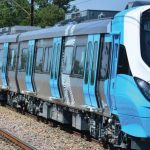Of GDP and the stimulus package. Oh, and the rand

The picture is looking pretty bleak
Despite Christmas being around the corner, I am sure that October crept up suddenly for many a consumer. Economists and other industry analysts, or really anyone who owns a vehicle, would have noticed a hole burning through their wallets as October progressed.
With the tumult of everything currently happening in the South African economy, my thoughts were to break down the events of the last few weeks and months and draw out the risks going into 2019.
Before looking at the events around October, it would be critical to first look at the state of the economy…
Gross domestic product (GDP) figures were released in September and came as a massive shock as South Africa entered a technical recession with a second consecutive quarter of contraction.
Markets were surprised by this, although it was always going to be inevitable that agriculture would drag down the overall number – following the drought, the double-digit growth seen throughout 2017 was never going to be sustained.
Second, with Easter falling in April once again this year, there is reason to believe that the way statistics account for holidays may have distorted the number. Ultimately, numbers aside, the picture remains the same. Domestic output remains too weak to significantly lift growth.
October, then, brought about the wave of announcements in the economy. The first was that of the record increase in the fuel price. While it was not unexpected, given the performance of the rand and the climbing oil price, it could not have come at a worse time as President Ramaphosa was gearing up for his Jobs Summit.
A stimulus package had already been announced by the president the previous month, so the fuel price increase would have placed tremendous strain on the goals of both.
Placing the events of October into context for the transport industry, the continued fall of the rand and rise of the fuel price landed a double blow. For one, the increase in running costs on both fuel and components was exacerbated by the rise in the cost of imported components. For vehicles requiring more frequent maintenance, the cost cycle suddenly increased significantly.
There is also a dark cloud lurking over the horizon… While the South African Reserve Bank (SARB) refrained from raising rates in September, the direction of monetary policy of the United States of America, and the expected tightening of European rates, will inevitably force the SARB to hike rates, either sooner than previously expected, or more frequently.
The overall impact on the freight industry is that profit margins will be squeezed, and finance may become more difficult to come by in the next three years.
Published by
Sam Rolland
focusmagsa



